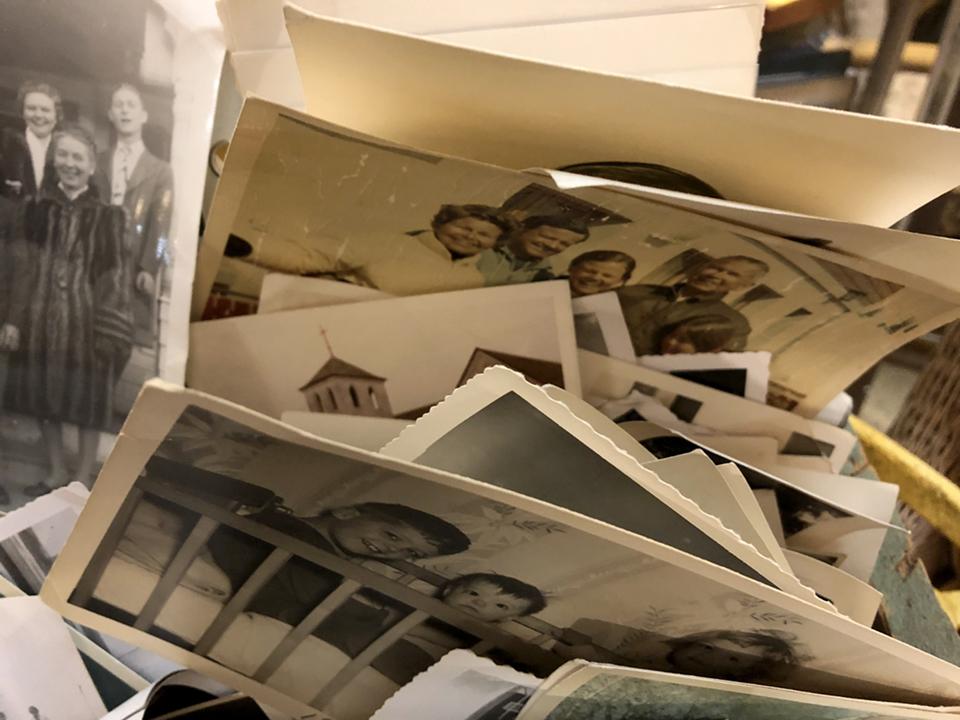Spring Cleaning and Organizing Your Print Photos

Ah, spring. Regeneration is in the air! For many, spring cleaning is an important and valuable ritual, which can take many paths. For those looking to get their messes of print photos organized, here are some tips to help you get started.
One of the first steps is deciding what to discard. Yes, you can get rid of print photos. As a photo organizer, I am a big proponent of editing and throwing away (or recycling) printed images that no longer serve a purpose. The trash can is your friend.
Let’s focus on the ABCs of organizing your print photos:
A=Album, B=B-roll or outtake, C=Can (yes, that type of can!)
Get Started
Things to consider:
• The best images to start with are the most obvious ones. Blurry, bad quality, or duplicate photos can be tossed. Same goes for ripped or frayed photos assuming they hold no value. If they do, restoration is a great option.
• Sorting 101: Have a few photo storage boxes available – these can double as your boxes for sorting photos. You can discard your old shoeboxes in favor of these. I like to use the sorting and storage options from Archival Methods.
Next up: Types of images
• Scenic images: There’s no need for dozens of photos of every single seaside visited, mountain climbed, sunset seen, and so on. Choose the best few from each batch.
• Group shots: Are there multiple photos of several people at an event? Does someone have their eyes closed or isn’t facing the camera or is obscured somehow? Chose the best one or two of these and move on.
As you sort, consider the information and story behind each image. Is that information saved somewhere, like on the back of the print (or elsewhere?) That info is metadata and it’s what distinguishes your keeper images from the ones you discard. Write down what you know (or get help from family members and close friends). Store info either in an online, sharable document or on an index card to be filed with the photos. Note: the index card will come in handy if you decide to scan the images. Also, If the images are sturdy and in good shape, you can write on the back – but only using a photo-safe pencils like these.
Sort the keepers into a specific container – ideally an archival photo box. Once done, review again and decide which are the A’s (album) and B’s (b-roll or outtakes). Having a hierarchy will help to prioritize which images to digitize, if you choose to do so..
Organizing options
Things to consider:
Our lives are like a photo collage, with many things happening simultaneously. However, photos need specific categories to be organized in. My favorites are dates and themes.
• Dates: When you don’t know the exact date of an old print, do your best to estimate. Look for visual cues (heights of kids, types of clothing worn, the season if the photo was taken outdoors) can help narrow down a timeframe. It’s fine to use decades or a range of years.
• Themes: Within dates, there are events that recur and are typically photographed. Winter and spring holidays, birthdays, summer vacations, graduations, and so on. Adding subfolders for specific family members works as well.
Conclusion
Things to consider:
• Our old photos are nostalgic and sentimental. It’s easy to get sidetracked and take a trip down memory lane. There will be time for that later – this task calls for focus. I recommend setting time limits, and that practice will serve you well in your photo organization tasks.
• Work in sessions. Maybe 25-30 minutes, then take a break and resume for another 25-30 minutes. If you feel yourself getting sidetracked, wrap it up for another day. Setting aside sessions to do your photo organization project will help you complete this task in a meaningful way.
Now, if you decide to digitize your print photos, you’ll be one step ahead with a manageable, organized structure.
Recent Posts
Archives
- February 2024
- January 2024
- December 2023
- November 2023
- October 2023
- September 2023
- July 2023
- June 2023
- March 2023
- February 2023
- January 2023
- October 2022
- September 2022
- August 2022
- July 2022
- May 2022
- March 2022
- February 2022
- December 2021
- June 2021
- April 2021
- February 2021
- January 2021
- December 2020
- November 2020
- October 2020
- September 2020
- August 2020
- June 2020
- May 2020
- April 2020
- February 2020
- January 2020
- December 2019
- November 2019
- August 2019
- July 2019
- June 2019
- May 2019
- April 2019
- March 2019
- February 2019
- January 2019
- December 2018
- November 2018
- September 2018
- July 2018
- June 2018
- May 2018
- April 2018
- March 2018
- February 2018
- January 2018
- December 2017
- November 2017
- October 2017
- September 2017






